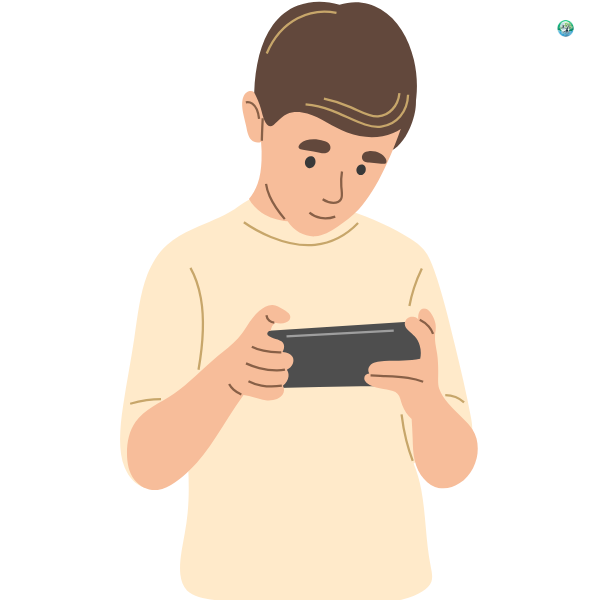
Dr Sathiya Ganesan’s
Breaking the Scroll Cycle — Helping Children Reconnect With Life, Focus, and Self
Helping Children Regain Control, Focus, and Emotional Balance in a Hyperconnected World
Mobile phones are a part of everyday life — but for many children and teenagers, screen time has shifted from habit to dependence. What starts as casual scrolling or texting can evolve into compulsive behavior that affects sleep, school, mood, relationships, and brain development.
Mobile Phone use disorder is a growing behavioral concern that requires not just discipline, but understanding, therapy, and structured support.
Dr. Sathiya Ganesan, Consultant in Child & Adolescent Psychiatry, offers specialized care for mobile use disorder, helping children and their families move from digital overwhelm to real-life balance.
Understanding Mobile Phone use Disorder
When Constant Connectivity Leads to Emotional Disconnection

It is driven by:
Mobile phone use disorder (also called smartphone overuse or nomophobia) refers to the excessive and compulsive use of a mobile device — often for messaging, social media, videos, gaming, or browsing — to the point that it interferes with daily life and emotional health.
- Instant gratification and dopamine release
- Fear of missing out (FOMO)
- Social validation and peer pressure
- Escaping stress, boredom, or emotional pain
It affects a child’s attention span, emotional regulation, and ability to be present in the moment.
Signs of Mobile Phone use Disorder in Children
- Anxiety, restlessness, or anger when the phone is taken away
- Constant checking of notifications or screen even during conversations
- Skipping sleep, meals, or homework for phone use
- Withdrawal from family or friends in favor of screen interaction
- Low frustration tolerance and poor focus
- Mood swings or self-esteem issues tied to digital interactions
- Lying about screen time or hiding phone use
These are not just “bad habits” — they may be signs of a behavioral aisorder needing clinical attention.
Holistic, In-Depth Evaluation
Dr. Ganesan conducts a comprehensive evaluation that covers:
- Phone use patterns, triggers, and emotional function
- Co-existing issues like anxiety, ADHD, depression, or trauma
- Family screen-use rules and communication dynamics
- Academic, social, and sleep disruption caused by phone use
- Child’s interests, routines, and offline engagement levels
This lays the foundation for a personalized and practical recovery plan.
Compassionate Communication and Awareness
Dr. Ganesan helps children:
- Understand why phones feel addictive
- Recognize their emotional triggers for screen use
- Develop insight into how overuse affects health and relationships
- Replace guilt with curiosity and cooperation
Healing doesn’t start with blame — it starts with trust and gentle awareness.
Expert Psychotherapeutic Interventions
Treatment plans often include:
- Cognitive Behavioral Therapy (CBT) – to break the habit-reward cycle
- Impulse control and emotion regulation training
- Motivational enhancement to build willingness for change
- Structured digital detox routines with screen time goals
- Therapy for underlying issues like anxiety, low self-esteem, or peer struggles
- Parent coaching to manage screen limits without conflict
The goal isn’t to punish screen use — it’s to restore balance and real-world connection.
Medication Support (If Needed)
If the Mobile Phone use disorder is compounded by:
- ADHD
- Anxiety
- Sleep disorders
- Mood regulation issues
Dr. Ganesan may consider short-term, carefully monitored medication support as part of a holistic care plan.
Building a Balanced Lifestyle
Therapy focuses on helping children:
- Rebuild healthy sleep, eating, and movement routines
- Explore offline hobbies like reading, music, sports, or art
- Develop mindfulness and emotional resilience
- Reconnect with family through shared rituals and conversation
- Learn how to use phones with awareness, not compulsion
This approach builds long-term self-regulation and emotional strength.
Family Involvement and Support
Dr. Ganesan works closely with parents to:
- Set and enforce screen time rules calmly and consistently
- Replace conflict with positive reinforcement and empathy
- Create screen-free family time and bedtime routines
- Model healthy phone habits and digital boundaries
- Strengthen emotional connection and communication
When families change together, children thrive together.

Why Choose Dr. Sathiya Ganesan for Mobile Phone use Disorder Care?
With a deep understanding of child development, digital behavior, and emotional health, Dr. Sathiya Ganesan provides:
- Non-judgmental, age-appropriate care
- Customized therapy that addresses the emotional root of mobile phone use disorder.
- A recovery plan that empowers both children and parents
- Practical tools for long-lasting change and digital wellness
He helps children not just unplug — but rediscover joy in real life.
Reconnect With Life — One Step at a Time
If your child is struggling to control their mobile use, it’s not too late to help.
Contact Dr. Sathiya Ganesan today to begin a recovery journey that builds focus, resilience, and freedom from screen dependence.
Is mobile use disorder a real condition in kids?
Yes. Behavioral experts now recognize phone overuse as a clinical concern, especially when it impacts sleep, mood, and functioning.
What’s the difference between normal phone use and disorder?
Mobile Phone use disorder involves loss of control, emotional dependence, and daily life disruption — not just long usage.
Can therapy help reduce phone dependency?
Absolutely. CBT and behavioral strategies can retrain habits and build healthier coping mechanisms.
Do I need to take away the phone completely?
Not necessarily. Balanced, structured use with gradual reduction is more effective than total bans.
How involved are parents in the treatment process?
Very involved. Parent coaching is essential to support boundary-setting and rebuild trust.


